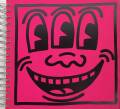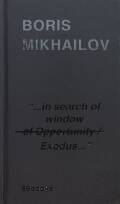Tomás Murube - Apuntes sin tiempo, Self published, 2014, Madrid

Tomás Murube - Apuntes sin tiempo (Front)

Tomás Murube - Apuntes sin tiempo (Spine)

Tomás Murube - Apuntes sin tiempo (Back)

Sample page 1 for book " Tomás Murube – Apuntes sin tiempo", josefchladek.com

Sample page 2 for book " Tomás Murube – Apuntes sin tiempo", josefchladek.com

Sample page 3 for book " Tomás Murube – Apuntes sin tiempo", josefchladek.com

Sample page 4 for book " Tomás Murube – Apuntes sin tiempo", josefchladek.com

Sample page 5 for book " Tomás Murube – Apuntes sin tiempo", josefchladek.com

Sample page 6 for book " Tomás Murube – Apuntes sin tiempo", josefchladek.com

Sample page 7 for book " Tomás Murube – Apuntes sin tiempo", josefchladek.com
Other books tagged Memory (see all)









Other books tagged Mother (see all)









Other books tagged Spanish (see all)









Other books tagged Black & White (see all)









Books to shop at placartphoto.com
Softcover, design by Pepe Florido and Ignacio González.
"This piece of work started out as an emotional search for trails left of my mother, some time after her death. It aimed to be a kind of memory album, an obituary hybrid between a memorandum and therapy against forgetting.
Eclectically constructed, with images and ideas from different sources; from the family album to medical records, from “decollage” to more personal experiences. The resulting mélange aspires to be a kind of grammar of remembrance, a reflection on the way memory works, a personal view of universal themes such as disease and death, a desperate act against fading memory, a showcase of emotional curiosities.
Time veils memory, amputating it, leaving only small parts of the image evoked: a gaze, a smile, a gesture. Paul Auster has one of his characters say that lives disappear: once people die, all trace of their life gradually fades away. Traces of the deceased remain in material objects, in the spaces they inhabited, and especially in images…medical records, drawings, manuscripts… imprints.
In this sense photographs are of particular value as material traces of an irretrievable past, rescued from a family album and transferred to the domain of art and memory. Photography has a unique relationship with reality. As Barthes says, radiation from the real body in front of the lens reaches me here, while a sort of cord joins the person being photographed to my gaze.
I make a reference to photography as a source of memory, of experiences, of existence. While photographs survive without their silver nitrite halos fading in an inverse process to that of chemical developing, people do not completely die. While memories remain –images- in active thought they somehow remain alive (memory as an inmortal act).
In this search for traces anything to do with experience wich makes me emotional, wich has the power to evoke, is of use to me. All these ambiguous images turn into something more than what they represent and, isolated from their natural context , lead to different interpretations. We read a magnetic resonance differently from a portrait or a photograph." (Tomás Murube)
Pages: 32
Place: Madrid
Year: 2014
Publisher: Self published
Size: 11 x 14 cm (approx.)
























